The Gulf Savannah places we visited are on Ewamian Country. I acknowledge the Traditional Custodians of this area and their connection to Country, and pay my respects to their Elders past and present.
This year we more or less unintentionally made it all the way to Gulf Savannah country for our winter road trip.
Think of the Gulf Savannah as stretching across northern Australia, from northwest Queensland, the Top End in the Northern Territory to the Kimberley region in WA.
It’s almost always hot there which is probably why we haven’t done much travelling around northern Queensland (except for Cairns and the Daintree, and Boodjamulla National Park).
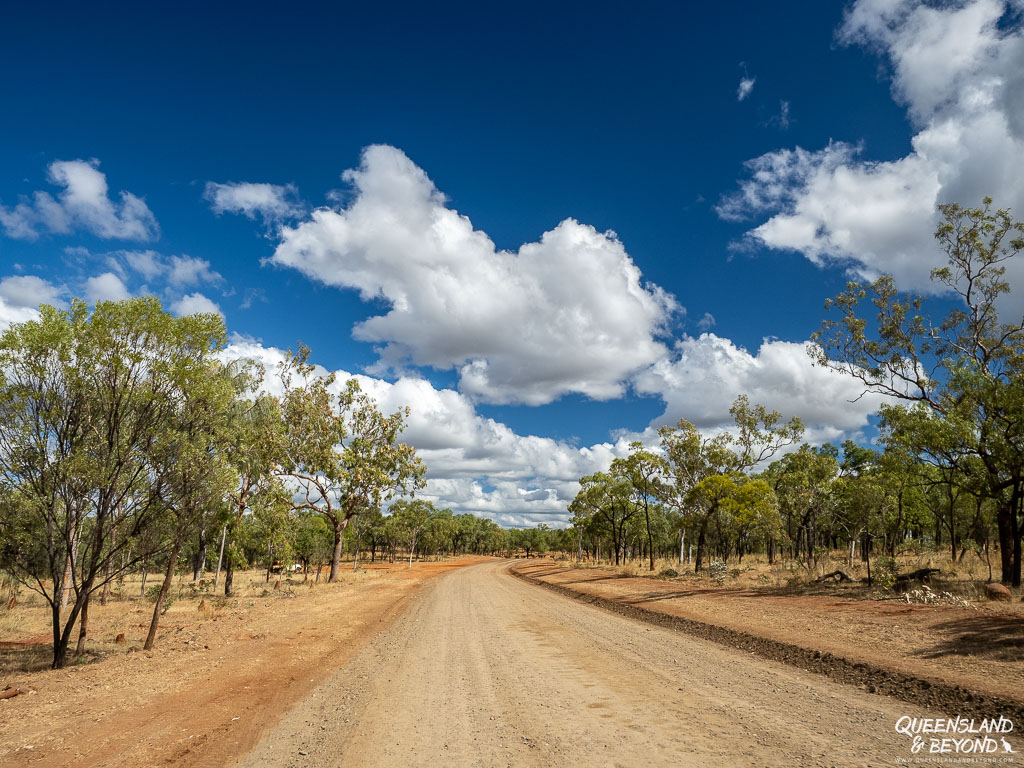
But it is quite a fun place to explore, even if you’re not into fishing (one of the main attractions as you head further west/northwest along the Savannah Way).
Here are some ideas on how to spend a week-long road trip around some beautiful parts of the Queensland Gulf Savannah.
Disclaimer: This post contains some affiliate links.
HEADING INTO GULF SAVANNAH COUNTRY: KNOW BEFORE YOU GO
Travelling in remote areas of Queensland requires a certain amount of preparation.
That said, we never felt as remote on this trip as we have on other Outback road trips.
In winter, there are often plenty of people travelling up here. Some of the communities are also not as spread out as further west. We never felt that far away from help (but we do also carry a PLB just in case).
And, of course, come prepared with a spare tyre, extra food and water, etc.
BEST TIME TO VISIT THE GULF SAVANNAH
It is hot up in Savannah land. Even in mid-winter (June/July), we had 30°C+ every day. High-20s are the usual.
The dry season (April-ish to September-ish) is definitely the best time to visit.
In fact, in the wet season roads are likely to be closed and facilities, including campgrounds, won’t even be open. Talaroo Hot Springs, for example, only operates from April to September.
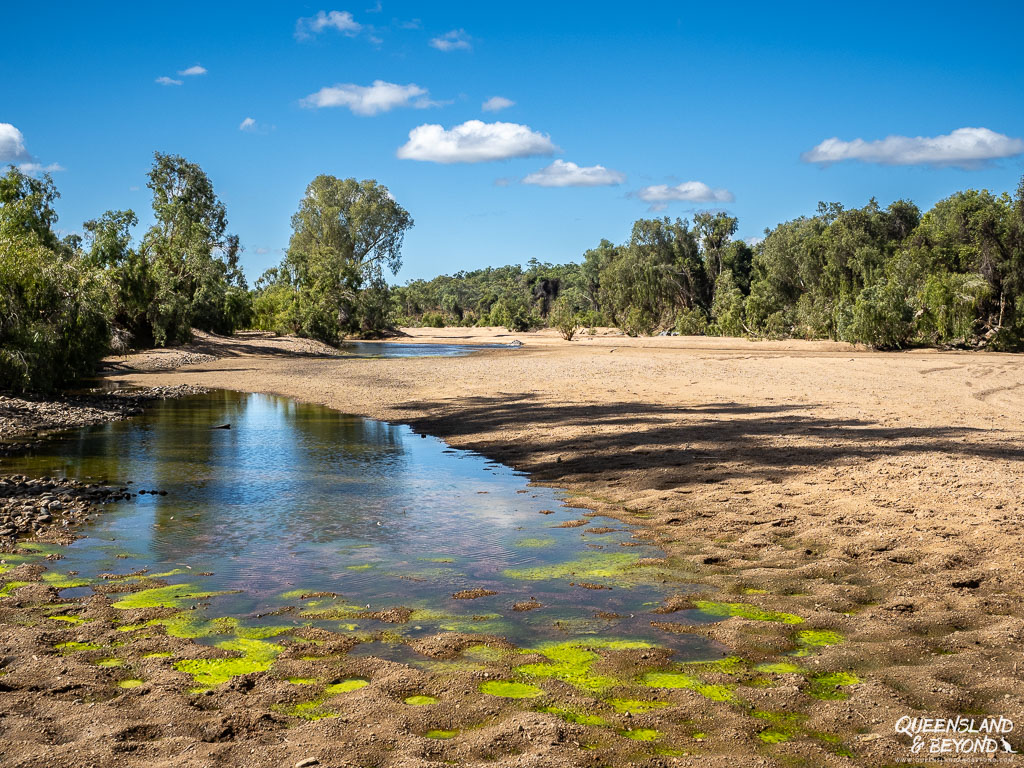
Night time temperatures in June/July can still be steamy (we had anything from 17°C to 22°C overnight). But it can also get colder overnight, even down to 10-12°C.
HOW TO GET TO THE GULF SAVANNAH
In Queensland, the Gulf Savannah region roughly covers the area inland from Cairns, towards the Gulf of Carpentaria and further west towards the gorges, rivers, plains and palm trees at Boodjamulla (Lawn Hill) National Park.
The Savannah Way is the major road that runs from Cairns all the way across the Top End of the NT and into the Kimberley region in WA ending in Broome. All up, it’s some 3,700km.
(Keep in mind that “major road” here doesn’t mean a sealed highway all the way. A lot of the Savannah Way is sealed but there are also plenty of unsealed sections, especially as you head towards the NT border and in the eastern parts of the NT.)
People often take the Savannah Way as an alternate road to the NT (instead of travelling via Mount Isa on the Barkly Highway).
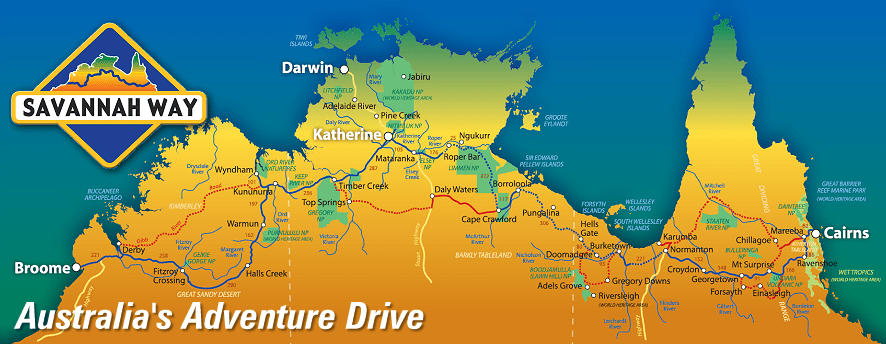
Coming from the South, we travelled inland via Hughenden and Charters Towers, and looped around parts of the Gulf Savannah. We then returned along the coast, taking about two weeks for the entire trip.
We only followed a small section of the Savannah Way. Our plan was to loop around the Etheridge Shire for a week, exploring national parks, gorges, lava tubes and hot springs.
Most of the places mentioned can be accessed in a 2WD-vehicle in the dry season but some spots like Rungulla National Park are limited to high-clearance 4WDs year round.
After a particularly long wet season this year, there was still a lot of water in the rivers with plenty of (shallow) river crossings on the menu for us.
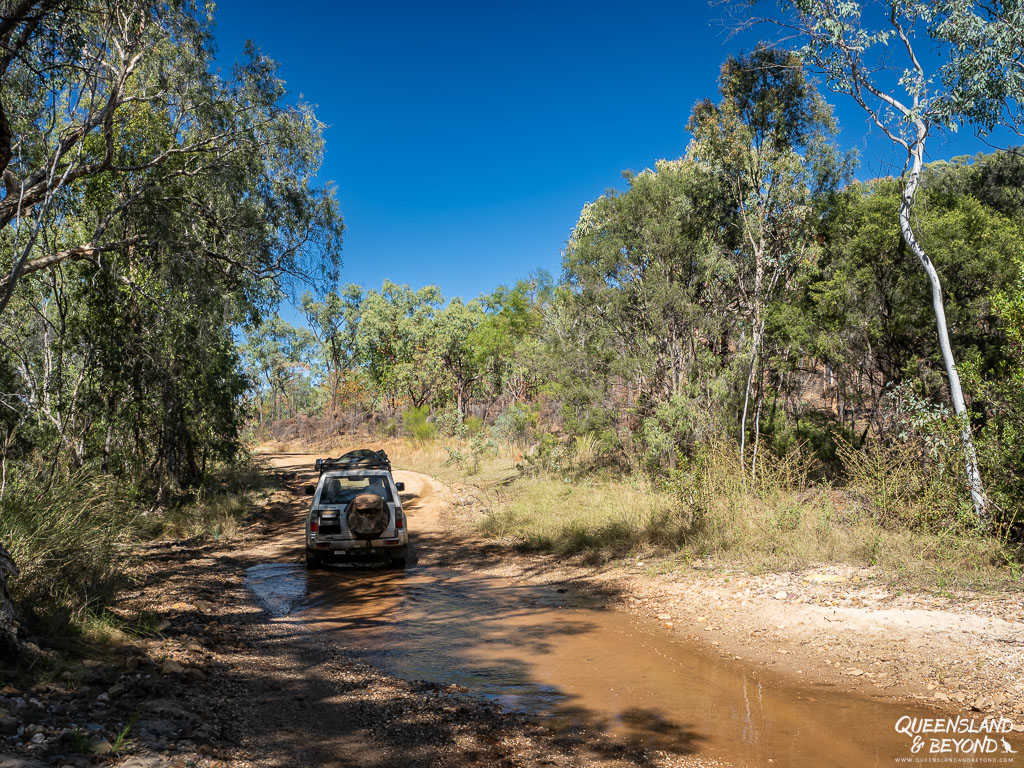
So keep that in mind, especially if you decide to go early in the dry season.
Ensure you have or know the following:
- Know when to travel: Winter is the best time for travel into the Gulf Savannah. The days are cooler (high-20°Cs) with occasionally cooler nights, and almost no rain. Late April to September is best. During the wet season, most tourist places are closed as roads become impassable and it is stinking hot (40°C+ every day).
- Fuel: There is plenty of fuel available along the way. Georgetown had a queue of cars waiting to fill up as the tanker had come through earlier that morning, making everyone wait. As for any outback/remote travel, just fill up whenever you can, even if you’re still 3/4 full. Mount Surprise, Georgetown and the Oasis Roadhouse (Lynd Junction) will be your best stops for filling up along this loop.
- Carry sufficient water: We took 60L and always had more than enough given that we stayed in caravan parks for half the nights on this loop. If you go off-grid (e.g. Rungulla NP), plan at least 5-7L per person per day.
- Don’t forget a hat and sunscreen: Even in winter, the sun is still strong out here and it is hot during the day. Make sure you hydrate sufficiently as well.
- Don’t expect to have mobile coverage: Unless you’re with Telstra (and not just a carrier that uses the Telstra network), you’ll only have very intermittent coverage out here. We had coverage at Undara Discovery Resort (reception area only), and there was very limited (= slow) WiFi at Cobbold Gorge. Carry a PLB (personal locator beacon) and/or have UHF radio in your car in case of emergency or breakdown.
7-DAY ROAD TRIP LOOP AROUND THE SAVANNAH WAY
Whilst the Gulf Savannah is a long way from southeast Queensland (or anywhere else in Australia), it’s not that far from Cairns (about 250km). We met a fair few families on school holiday trips from around there.

This road trip loop around the Etheridge Shire is about 670km in total.
The first two stops on this loop, Undara Volcanic National Park and Talaroo Hot Springs, are along the Savannah Way. Both are easily accessibly by conventional 2WD.
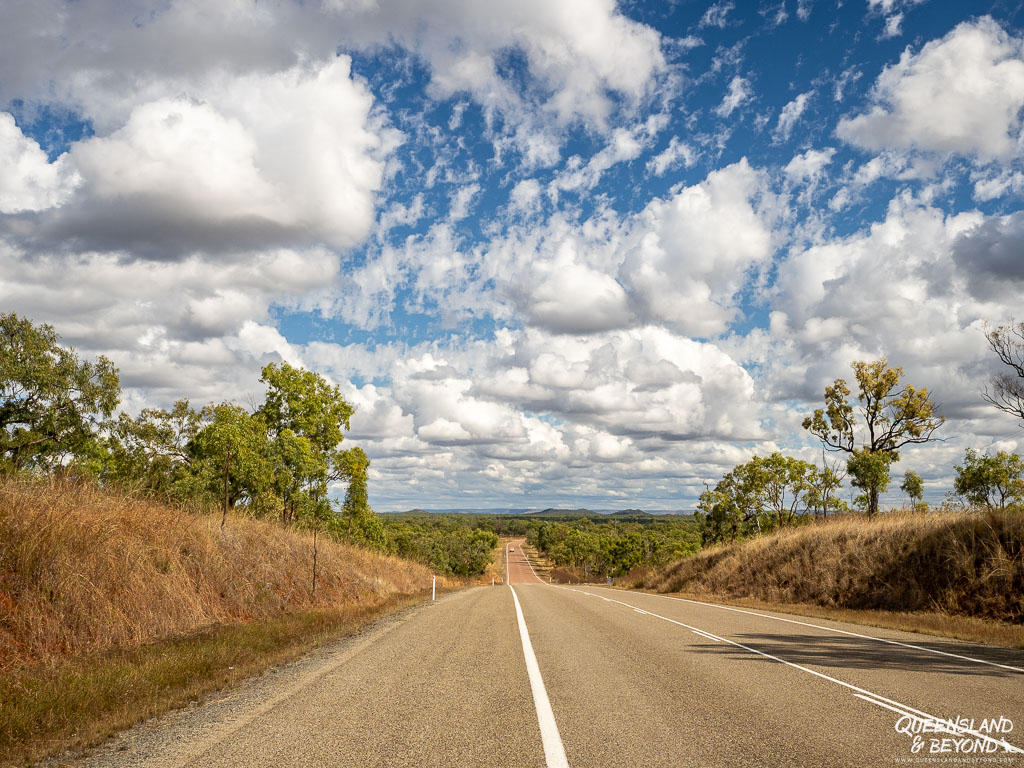
Once you get to Georgetown, you’ll leave the Savannah Way and head south along mostly unsealed roads to explore Cobbold Gorge, Rungulla National Park and Copperfield Gorge.
Cobbold Gorge is accessible by 2WD (as is Copperfield Gorge if you take the mostly sealed Forsayth Road). For Rungulla National Park you will need a high-clearance 4WD vehicle to be able to cross the river to get to the camping area.
DAY 1-2: UNDARA VOLCANIC NATIONAL PARK
Undara Volcanic National Park is one of the popular spots in the Gulf Savannah.
The national park’s not far off the Savannah Way, about 6km down a sealed road (with a further 9km to the Discovery Park Resort).
You’ll probably want to spend at least a day at Undara to explore the lava tunnels, maybe do a hike or just relax at the resort.
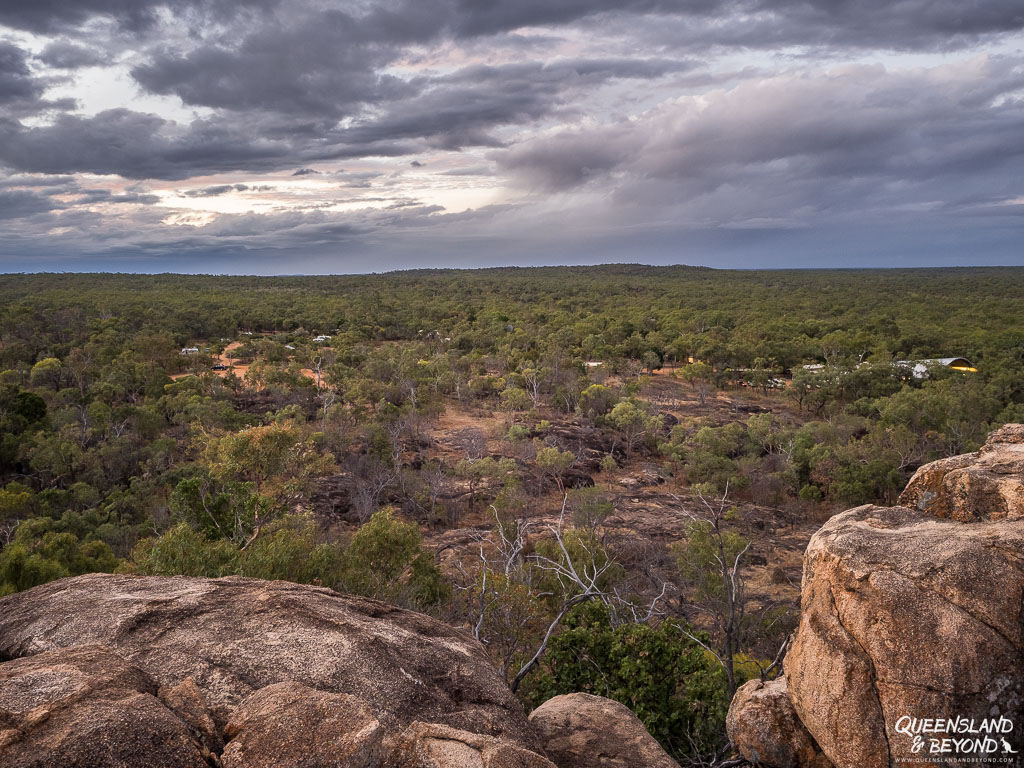
The lava tunnels crisscross the country here, running for about 160km, and are only accessible on a tour through Undara Discovery Resort. This takes a bit of the fun away but that’s how it is.
TOURING THE LAVA TUBES
The Archway Explorer Tour stays mostly on boardwalks and is best suited to families with small(er) children and those struggling with mobility.
We opted for the Wind Tunnel Explorer, which takes about two hours and allows you to walk through an entire (dark) lava tube.
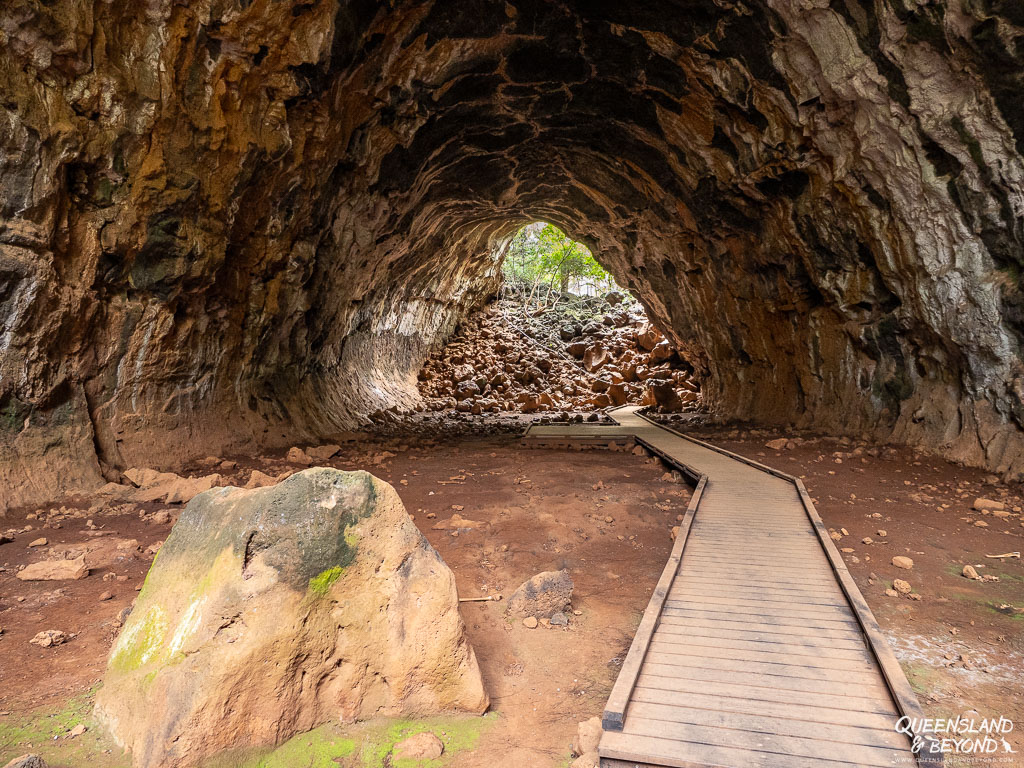
Walking through a dark tunnel was kind of cool but overall, it wasn’t the greatest tour (too slow). Your experience probably really depends on the tour guide.
There are multiple tours a day but book in advance as we saw a fair few day visitors who were unable to do a tour since they hadn’t booked ahead.
HIKING IN THE NATIONAL PARK
There are also a couple of hikes you can do at Undara Volcanic National Park.
The Kalkani Crater Rim Walk (2.5km) takes you along the rim of, unsurprisingly, Kalkani Crater. There are some nice views but it’s not super exciting. You’ll have to drive to the day use area in the national park to do this hike.
The longer one, Rosella Plains Lookout Track (12km), is the nicer one of the two and starts from the resort. But go early, it’s very exposed.
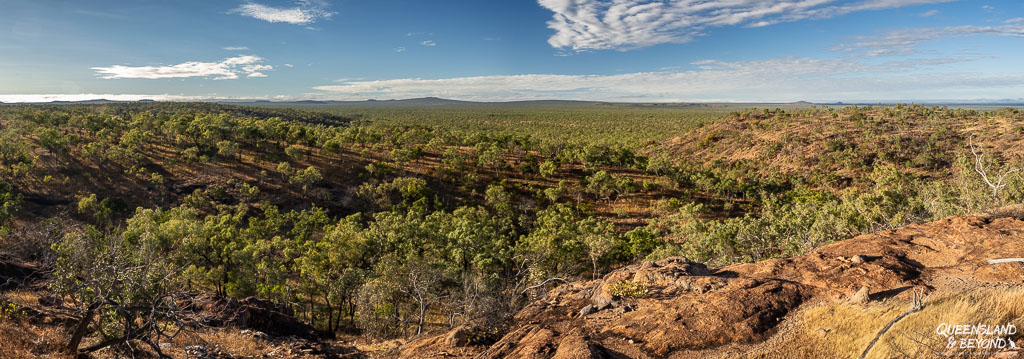
If you’re staying at the Undara Discovery Resort, there are also a few marked trails to explore across the property, including to a historic pioneer hut.
STAYING AT UNDARA DISCOVERY RESORT
There is no national park camping at Undara Volcanic National Park so your only option is the Undara Discovery Resort. It’s located within the national park and perfect if you want to do a tour as they’re run from there.
For a tourist park, it’s quite nice, especially in the tent-based section. We had a lovely campsite and were lucky enough not to have neighbours either sides.
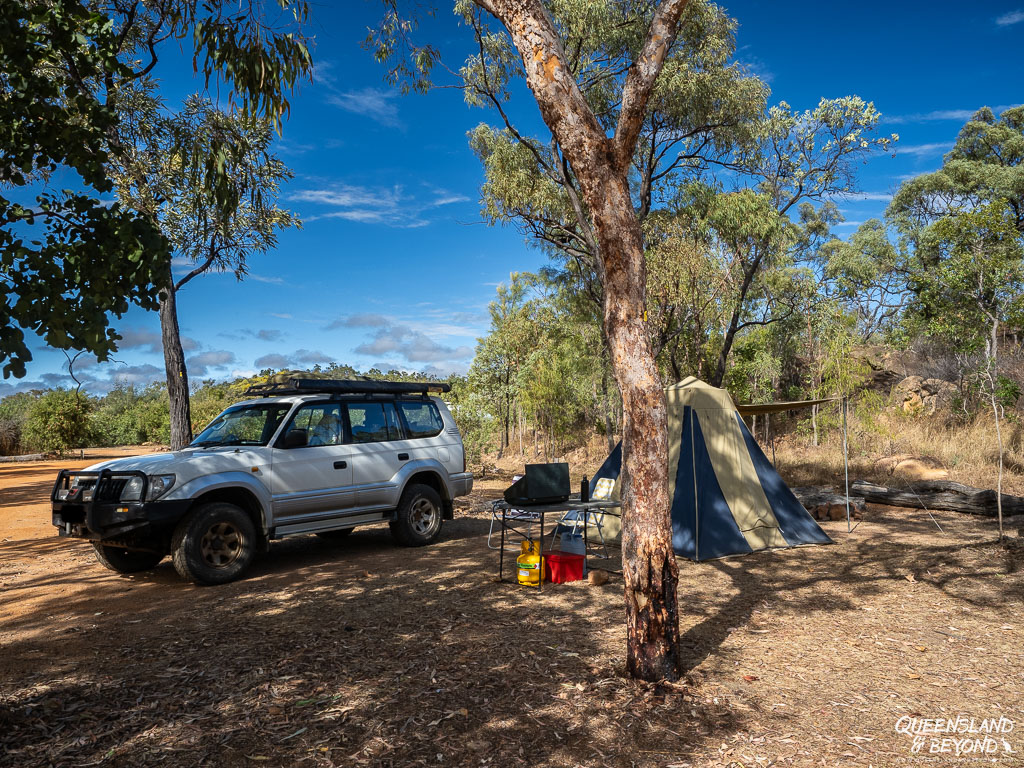
We had two nights here, which we both felt was sufficient time. After doing the Rosella Plains Lookout Trail in the early morning, we left late morning for Talaroo Hot Springs.
There’s a very small pool, and also a bar and restaurant, which feature seating in refurbished train carriages. Very cool.
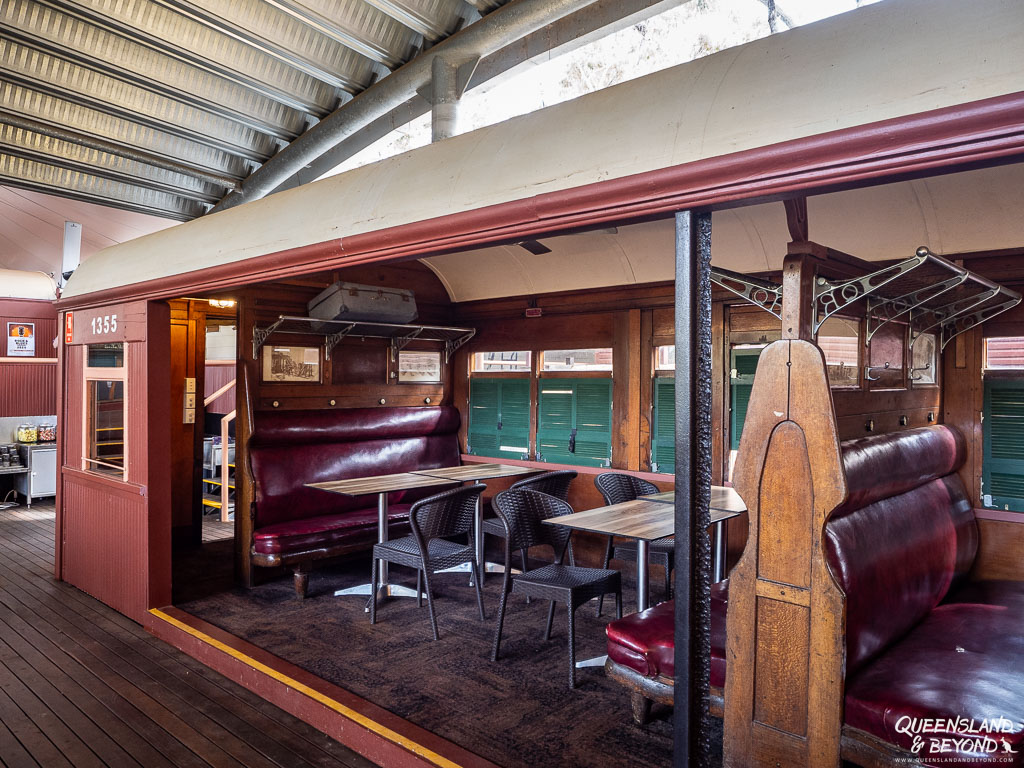
You can also stay in refurbished train carriages as one of the accommodation options.
UNDARA VOLCANIC NATIONAL PARK AT A GLANCE
CAMPING COST: $43 (6 pp) / $48 powered (2024) at Undara Discovery Resort
WIND TUNNEL TOUR: $71 pp
LOCATION: Undara Road, Mount Surprise Qld 4871
WEBSITES: Undara Discovery Resort | Queensland Parks & Wildlife Service
DAY 3: TALAROO HOT SPRINGS
From Undara Volcanic National Park it’s only about 100km to Talaroo Hot Springs along the Savannah Way. We left Undara around lunch time and took our time, getting to Talaroo in the early afternoon.
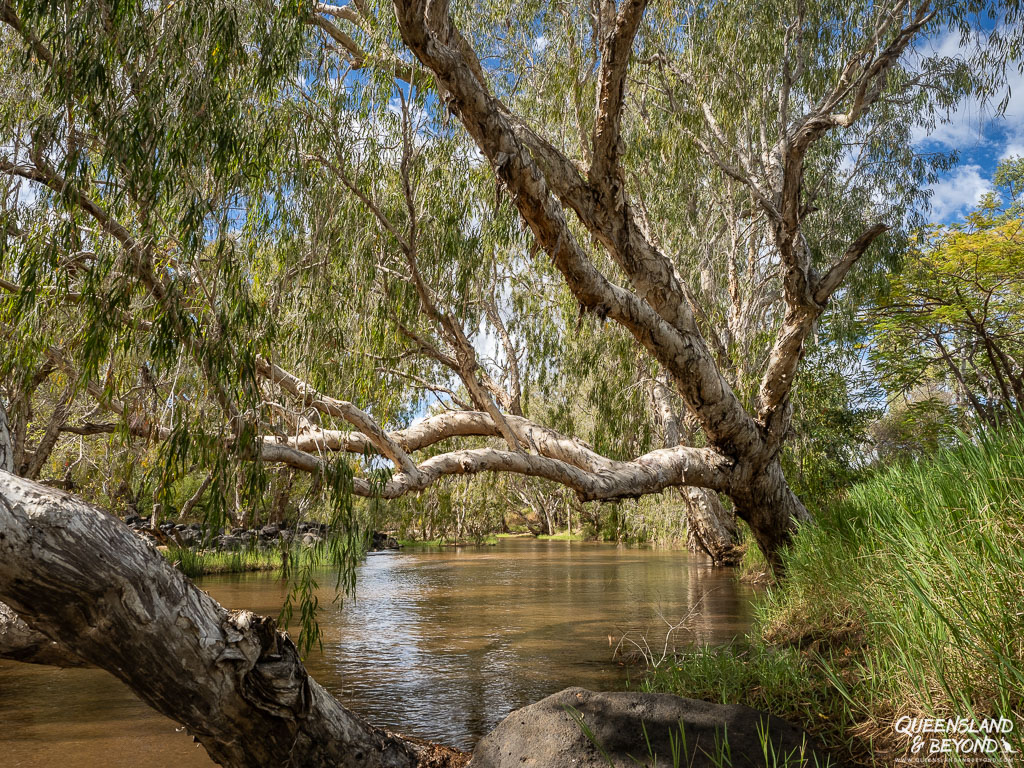
You wouldn’t think that hot springs are that awesome in hot weather but they are!
Talaroo Hot Springs was one of the best spots we stayed at on our road trip along the Savannah Way.
They’ve only been operating for a few years, and are an Aboriginal-owned and run enterprise.
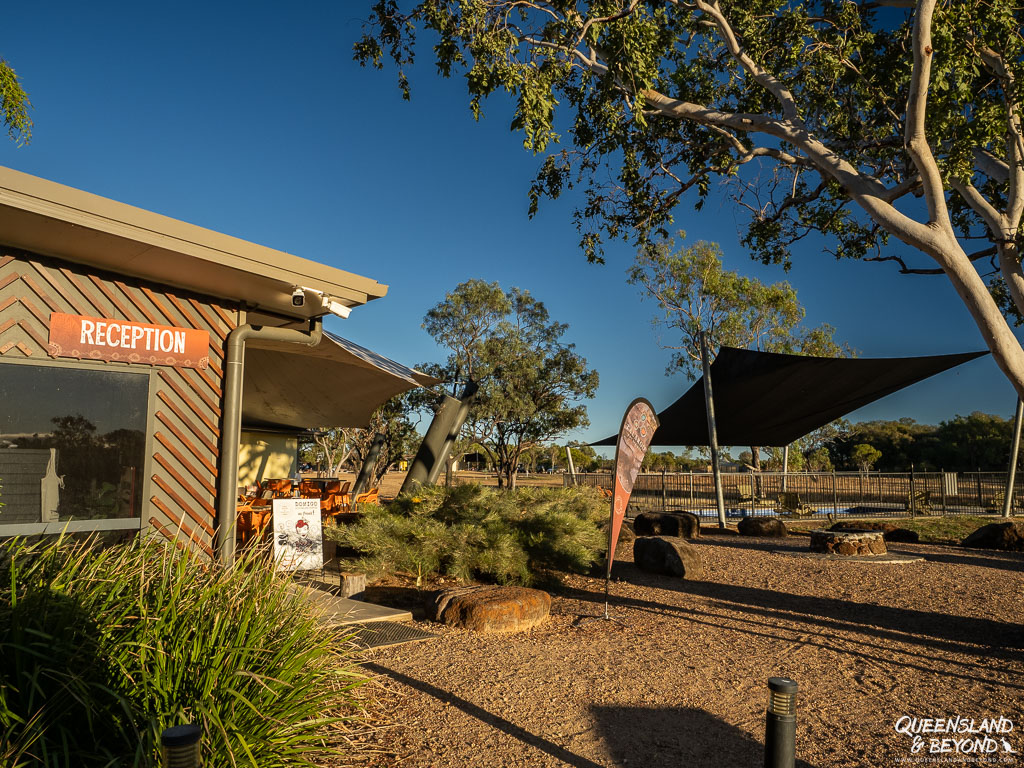
TALAROO HOT SPRINGS TOUR
The hot springs are only accessible via a tour or by booking a private bathtub.
We only had one night and the bathtubs were booked out so we opted for the 4pm hot springs tour. It was fabulous! Absolutely no regrets.
Although you don’t get to bathe in the actual hot springs (too hot for that, plus they’re a very special area for the Indigenous owners), the hot spring pool is large enough to not make you feel crowded.
The tour is about 90 minutes but you get more than 45 minutes for a soak in the pool (about 38°C). That was plenty of time, most people left well before the time was up (not that anyone was hurrying us up anyway).
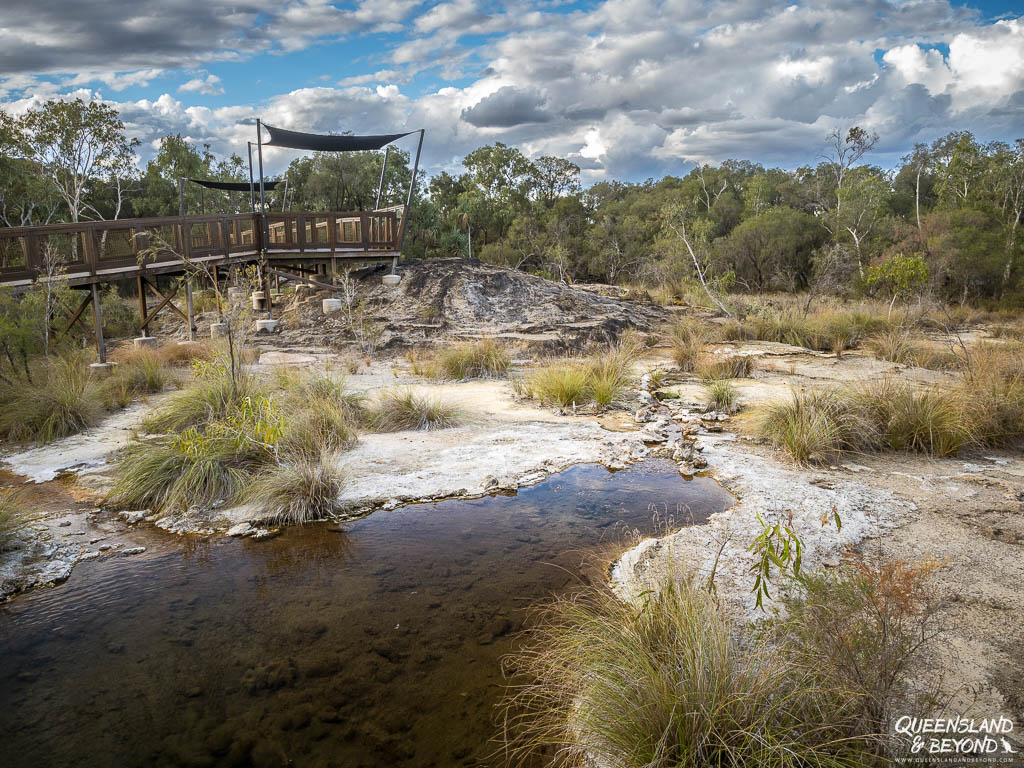
CAMPING AT TALAROO HOT SPRINGS
Even without the hot springs, we would happily return to Talaroo.
There are powered and unpowered sites available though all are very exposed (until their vegetation grows a bit more). Fortunately, there is a bit of separation between each site so you feel like you have a tiny bit of privacy.
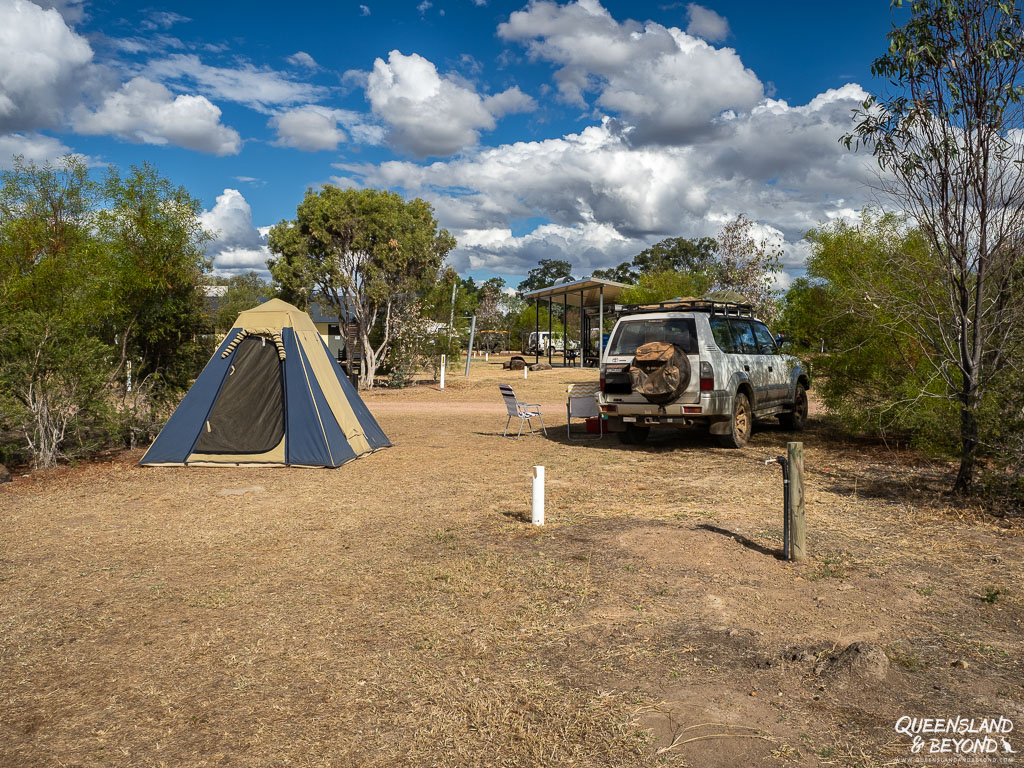
The kitchen facilities are great as is the brand new toilet block and laundry facilities (ie. washing machine).
There’s also a café on site (fabulous, especially since they had gluten-free brownies) as well as a small but popular pool.
If you don’t fancy camping, you can also stay in eco tents here.
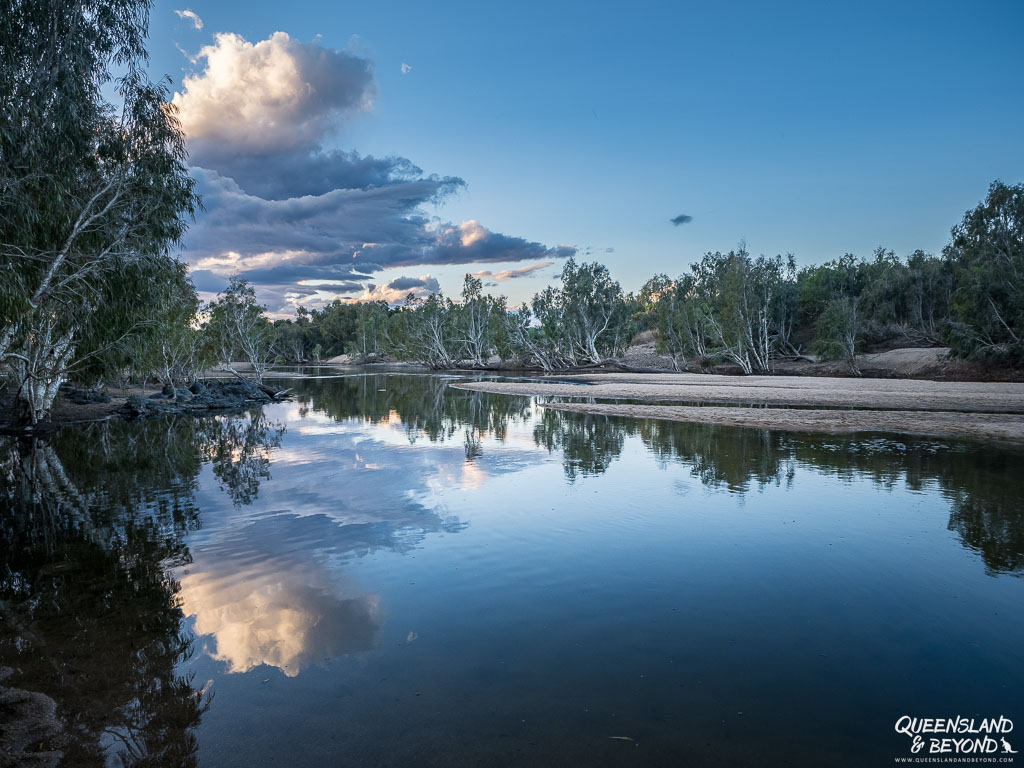
The Einasleigh River that runs through the property is even more gorgeous. Just beautiful and perfect for a little swim.
You could easily spend a couple of very relaxed days here. Sadly, we only had enough time for one night.
TALAROO HOT SPRINGS AT A GLANCE
CAMPING COST: $35 unpowered (2 pp) / $43 powered (2024)
HOT SPRINGS TOUR: $40 pp / $50 pp (private bath)
LOCATION: Gulf Savannah Way, Mount Surprise Qld 4871
WEBSITE: Talaroo Hot Springs
DAY 4-5: COBBOLD GORGE
We’d known about Cobbold Gorge for some time so once we knew we were heading up to the Gulf Savannah, we decided to stop at Cobbold Gorge for a couple of nights.
From Talaroo Hot Springs, it’s about 150km to Cobbold Gorge if you’re travelling via Georgetown.
At Georgetown, you’ll leave the Savannah Way and head onto Forsayth Road to get to Cobbold Gorge.
Georgetown is a good spot to stock up on any groceries or fuel as it’ll be your last bigger town for now.
[I bought a few homemade chutneys and jams at Venie’s Fruit & Veg Store that she makes out the back when it’s not busy. We had a little jam incident here as one of the jars was faulty and kumquat jam exploded on me, my car seat and half the car. We spent almost an hour cleaning up the sticky mess that had got absolutely everywhere.]
Cobbold Gorge Village is on a working cattle station, and these days comes with a full on resort-style experience.
To be upfront, we didn’t love our experience at Cobbold Gorge. We were there in the school holidays, and it was just too busy for us.
For a family with younger kids, this would be a great place to camp for a few days.
COBBOLD GORGE TOUR
You can only access Cobbold Gorge on a guided tour. The tour is three hours, and includes a 2km walk (across the new glass bridge) and a boat trip down the narrow gorge.
Multiple tours are run each day (with multiple tours going at the same time), and it pays to book in advance, especially if you want to go at a certain time. During the (winter) school holidays, they add additional tours, including a 7am tour (my choice).
I think that the 7am tour is the best one since the light is still reasonably soft at that time of day, and it’s not yet stinking hot.
Cobbold Gorge is a narrow sandstone gorge, and if you’re lucky you might even spot a freshwater croc in the permanent watercourse.
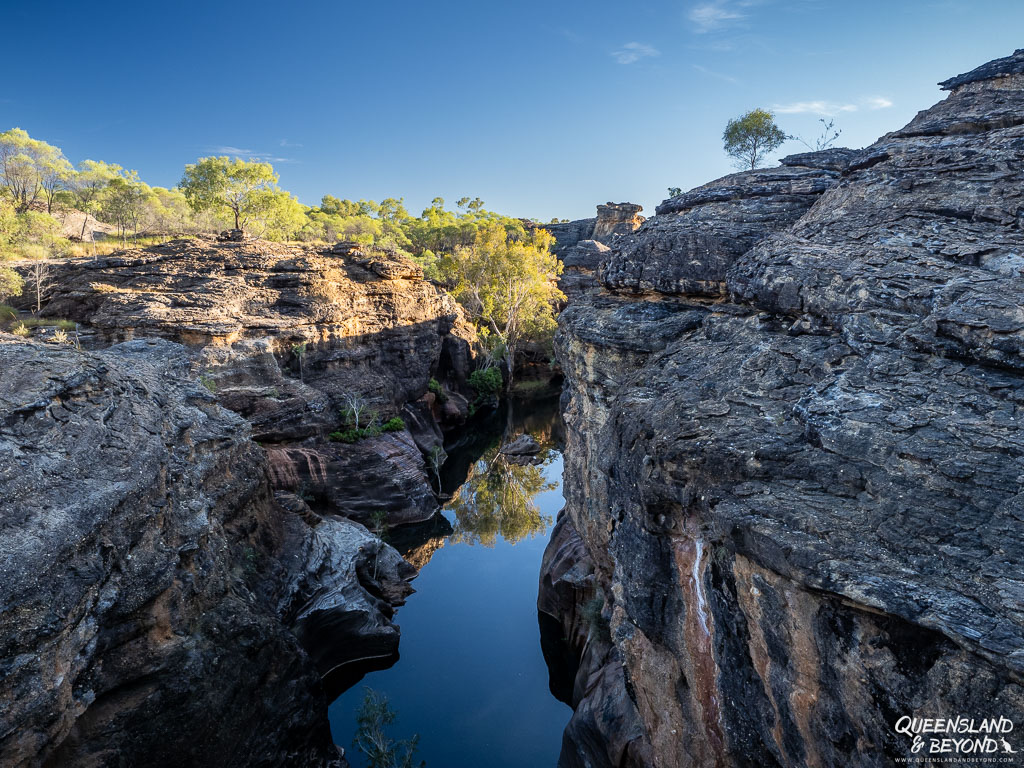
Both the walk and the boat trip are quite slow so there’s little chance you feel rushed (but possibly a bit meandering). The boat trip is nice and quiet as they now use electric boats to very slowly drift you up and down the gorge.
If you want to take photos in the gorge, get in the boat last (so you sit at the front) as you just cannot see past people the way the boats are designed (and given how narrow the gorge is).
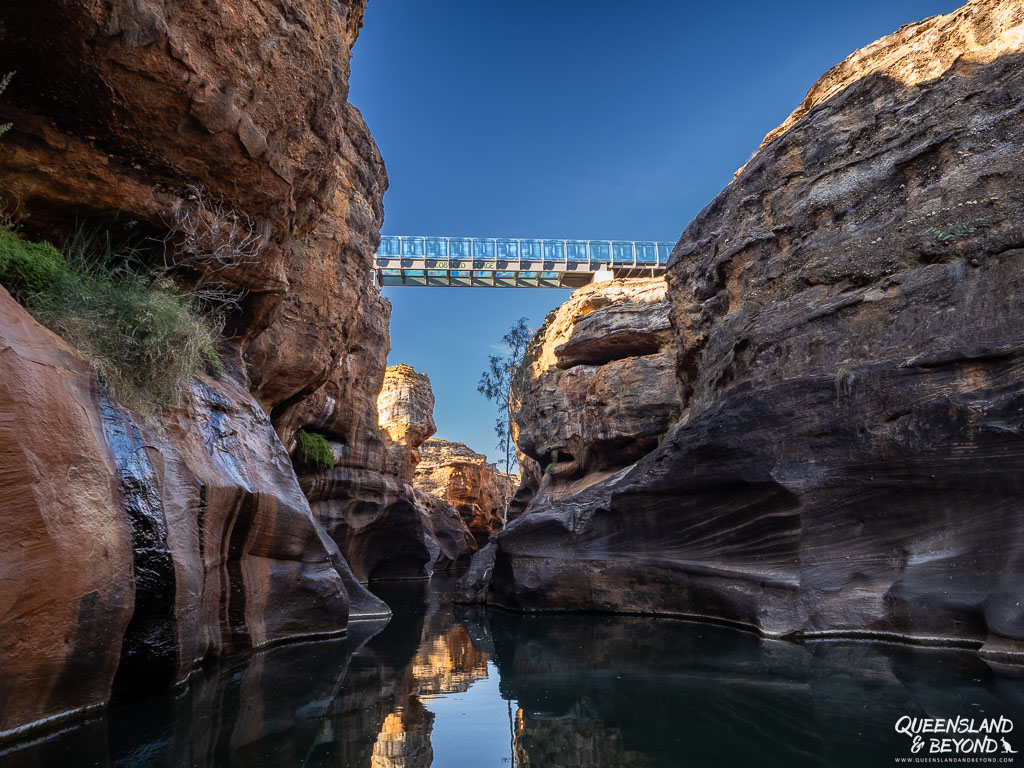
The guides tell you a lot about the history of the family and the property, flora and fauna of the area, and point out various things around you.
While the tour was slow, it was quite enjoyable and you kind of have to do it since you’ve come all this way.
But for the price tag we found it underwhelming – the gorge is really quite small. If you haven’t travelled to the NT (or WA) and explored their gorges, you’d probably love this.
It is a beautiful little ecosystem and it’s great that they’re taking such fabulous care of it (it’s officially a ‘nature reserve’) but with three tours going at the same time (or as many as six tours at other times!), it was just a case of ‘too many tours and too little gorge’ for us.
CAMPING AT COBBOLD GORGE
If you’re staying at Cobbold Gorge, you’ll be staying in the village where you’ll have plenty of accommodation options to choose from (including camping, huts or motel-style rooms).
The unpowered section is rather small and whilst they’ve tried to create some separation between sites, it was a bit cramped in the school holidays. Maybe at a quieter time, it would be lovely camping here. There are tons of powered sites, some shady, some not so much.
Our time was marred by people, yet again, playing music so loud that it was annoying, and just having so much hive and activity around us that it just wasn’t enjoyable camping. In the end we left early and forewent our second night.
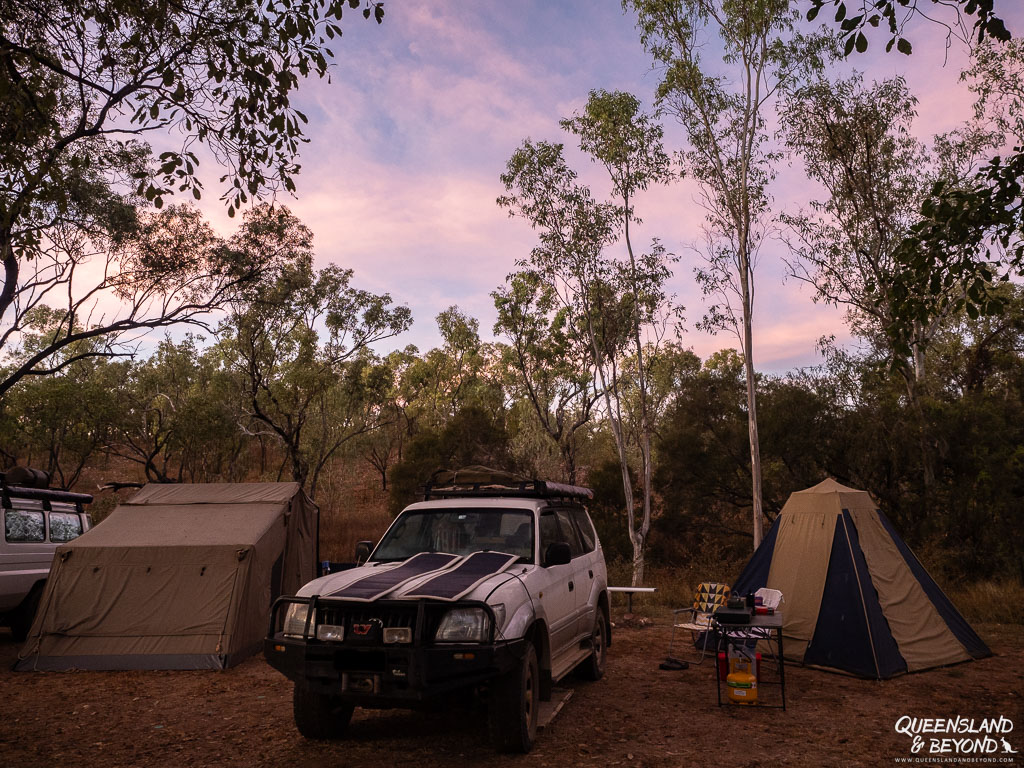
In general, the facilities are good, especially the showers were great! There isn’t much in terms of kitchen facilities: there is a fridge, toaster and kettle available. But you can fill up your water (ok-tasting, not a given in these parts) and you can even leave your rubbish behind if you want.
There’s an infinity pool overlooking the lagoon that was teeming with kids most of the time, a (very small) shop with basic groceries, and a few marked hiking/bike trails across the property.
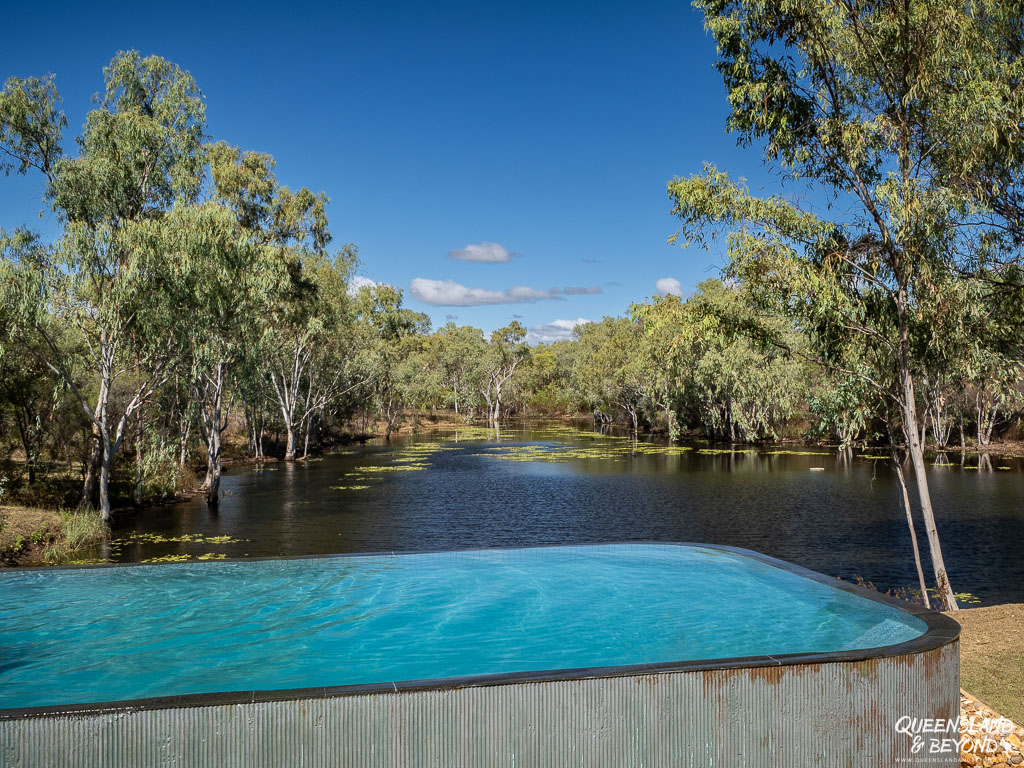
We worked up a sweat going to Russell’s Lookout for sunset but sadly, the sunset was pretty obscured by vegetation. Great views over Cobbold Gorge Village though.
COBBOLD GORGE VILLAGE AT A GLANCE
CAMPING COST: $18 unpowered (per adult) / $48 powered (2 pp) (2024)
COBBOLD GORGE DAY TOUR: $117 pp
LOCATION: Cobb Road, Forsayth Qld 4871
WEBSITE: Cobbold Gorge
DAY 5-7: RUNGULLA NATIONAL PARK
From Cobbold Gorge Village, it’s only about 60km to Rungulla National Park and will take about 1-2 hours depending on the state of the (unsealed) road.
Old Robin Hood Road had recently been graded so it was a pretty quick drive for us. There are a few river crossings along the way but they were all pretty shallow in early July and nothing to worry about in a 4WD.
You can spend a day at Rungulla National Park or an entire week.
It is simply blissful camping along the Gilbert River, and there is really not much to do other than nothing.
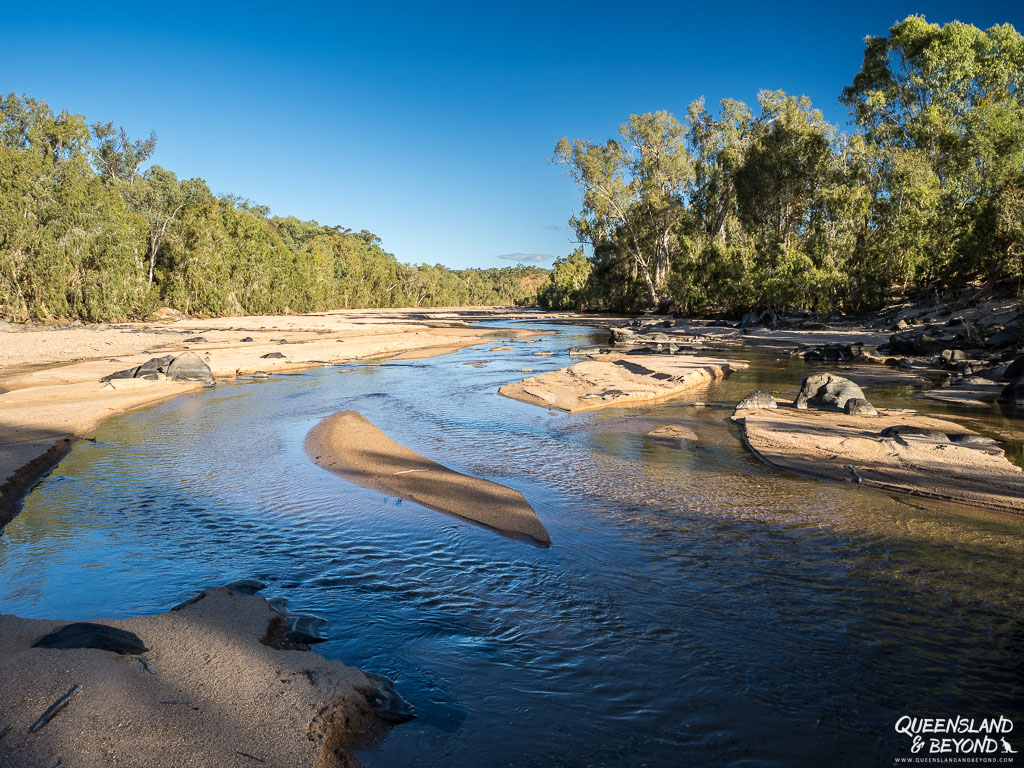
We loved it.
It felt like we’d stepped into heaven with our own private bush campsite, a gorgeous river nearby and not a person in sight. After two nights here, we did not want to leave.
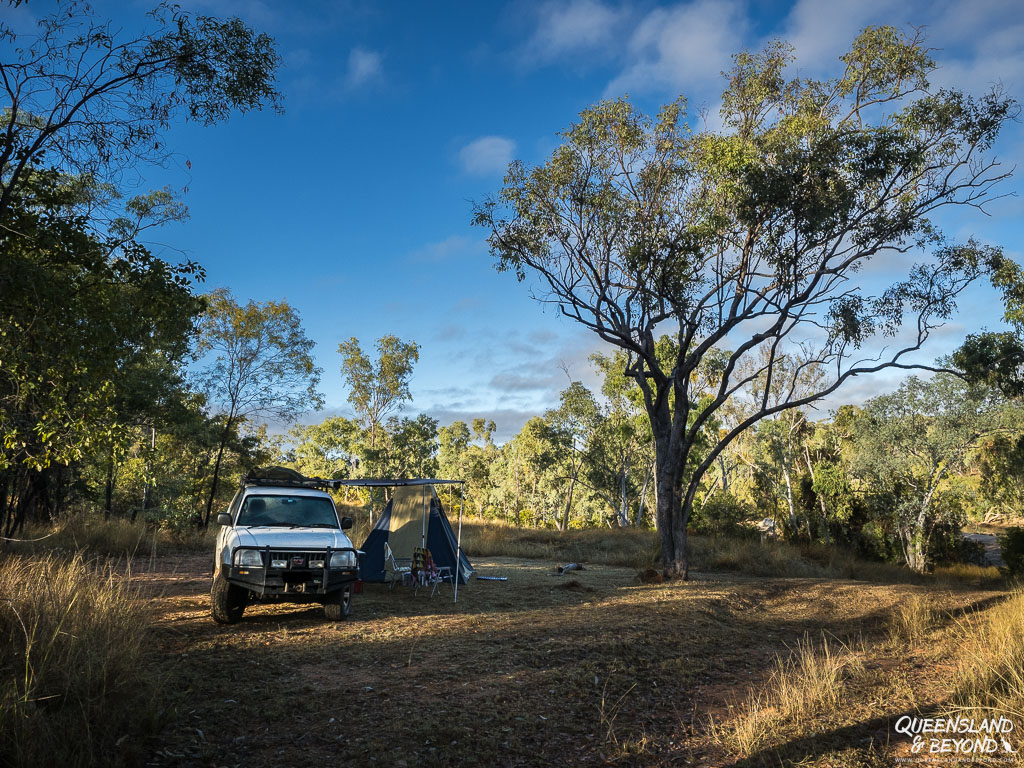
There’s a very small rock art site at Rungulla, which is worth having a look at. The information sign says that it’s about 500m to the rock art site but you’ll be there after about 50m, you can actually see it from the road.
RUNGULLA NATIONAL PARK AT A GLANCE
CAMPING COST: $7.25 (pp/pn) (2025); pre-bookings only
LOCATION: Rungulla Road, Gilberton Qld 4871
WEBSITE: Queensland Parks & Wildlife Service
DAY 7: COPPERFIELD GORGE
To complete our road trip loop in the Gulf Savannah, we headed back to the Old Robin Hood Road and drove towards Gilberton and onto Einasleigh, about 150km.
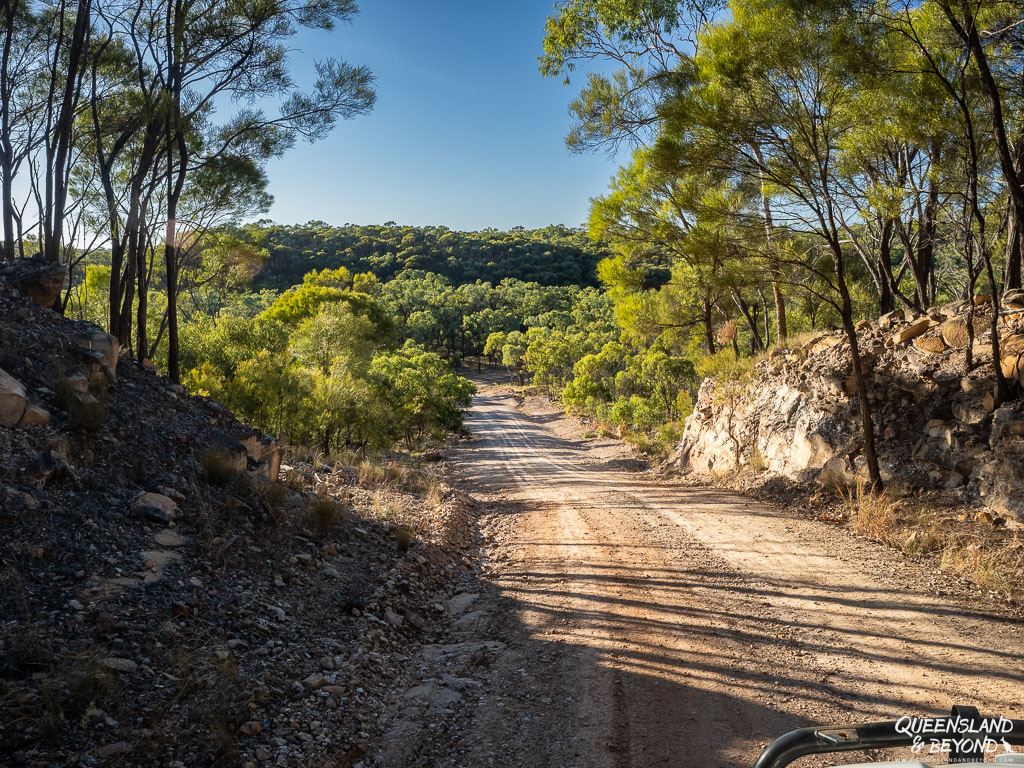
At Einasleigh, you can stop at the local pub for lunch or wander around Copperfield Gorge where the river cut a fissure through lava flow creating the gorge.
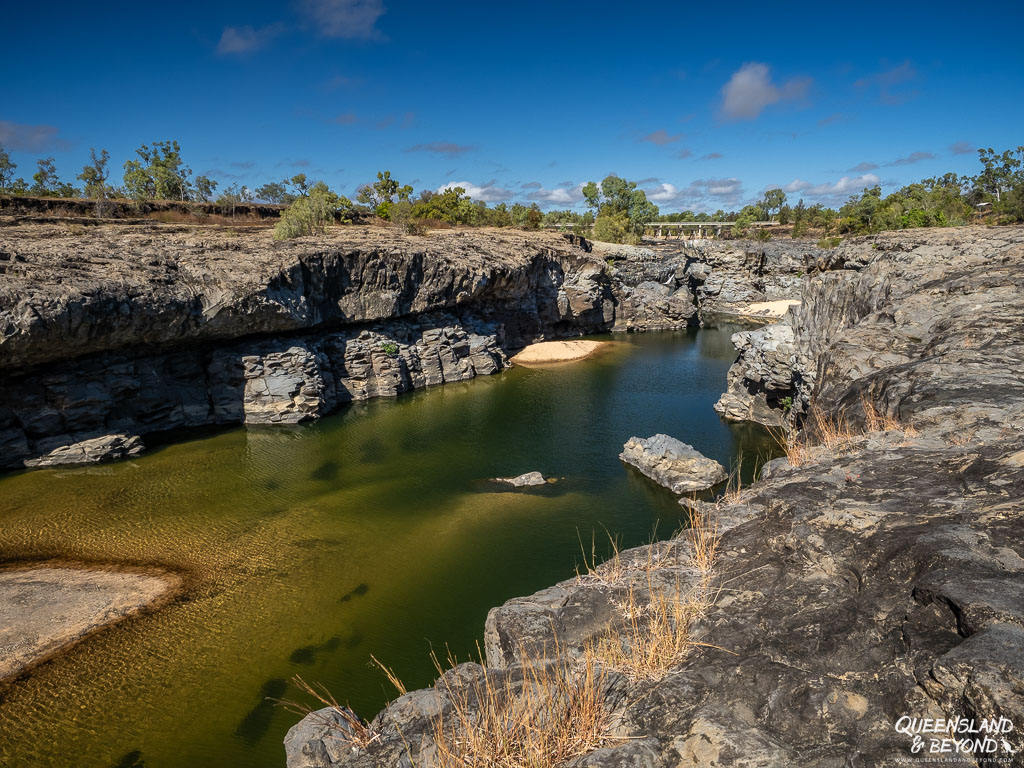
It’s a popular swimming spot but since we had a long drive ahead of us, only the husband went for a quick swim. I made some coffee to keep us awake for the next few hundred kilometres.
MORE STOPS IN THE GULF SAVANNAH REGION
With all this volcanic action, this region is also famous for fossicking and mining. You can camp and fossick at Flat Creek Station (gold), Agate Creek Gemfields (agate) or O’Briens Creek (topaz, quartz). There is also a huge collection of gemstones and minerals at the TerrEstrial Centre in Georgetown.
Another cool option for exploring this region, especially if you don’t have your own transport, is to take the Savannahlander Train from Cairns to Forsayth and back.
Happy exploring,

SAVE TO PINTEREST
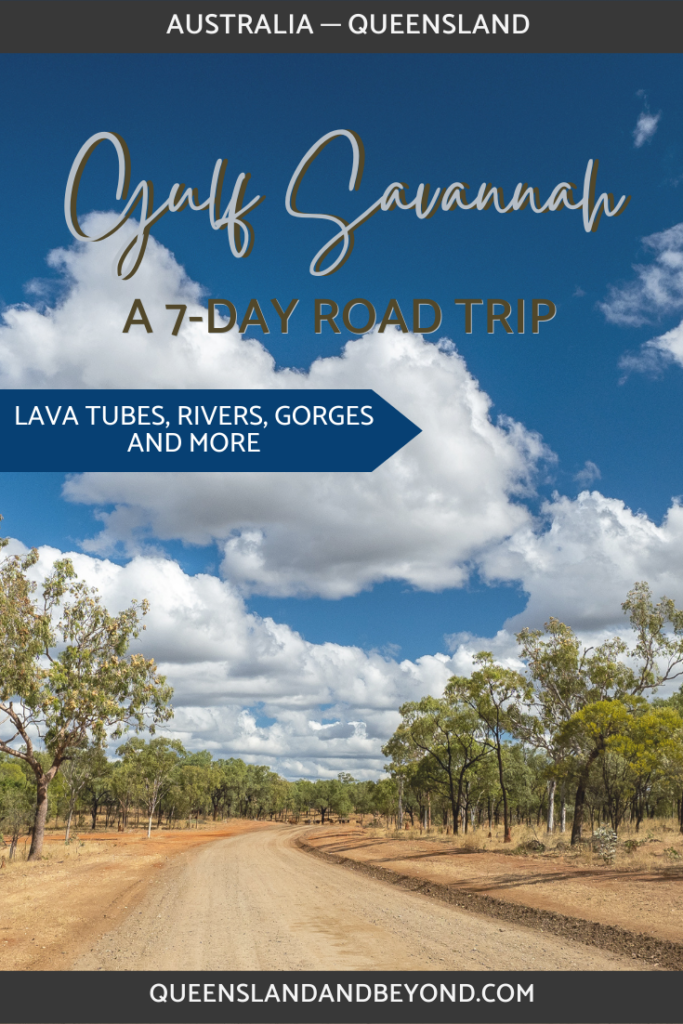
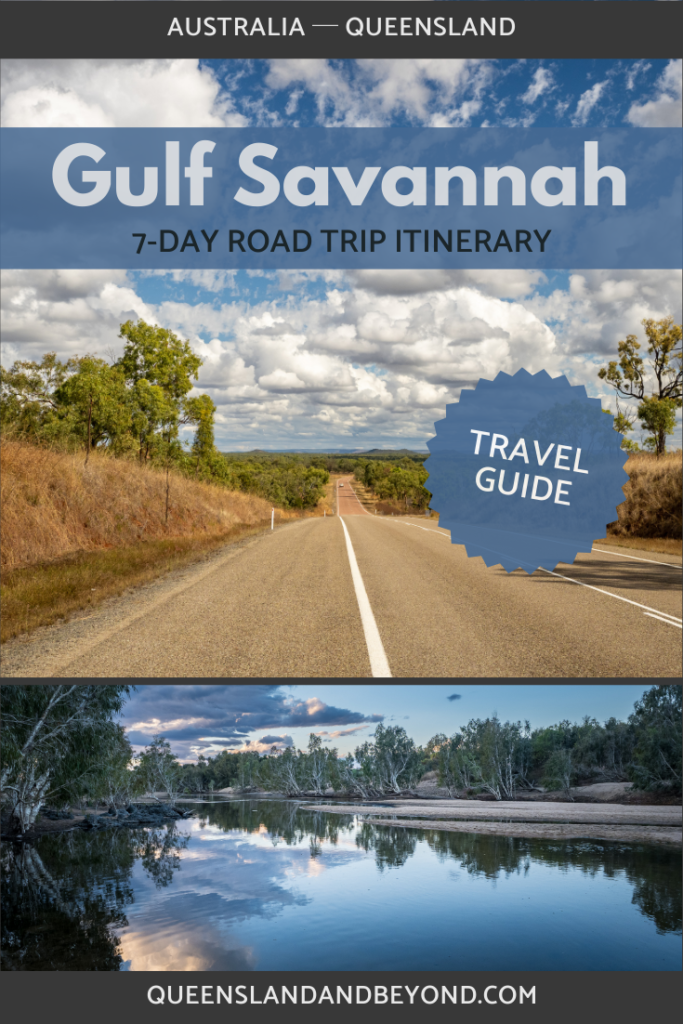

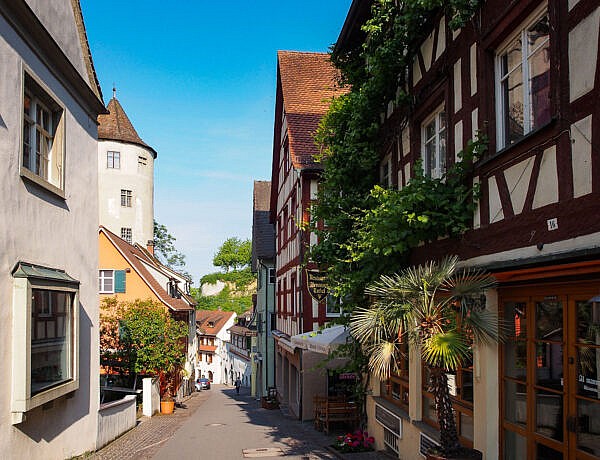
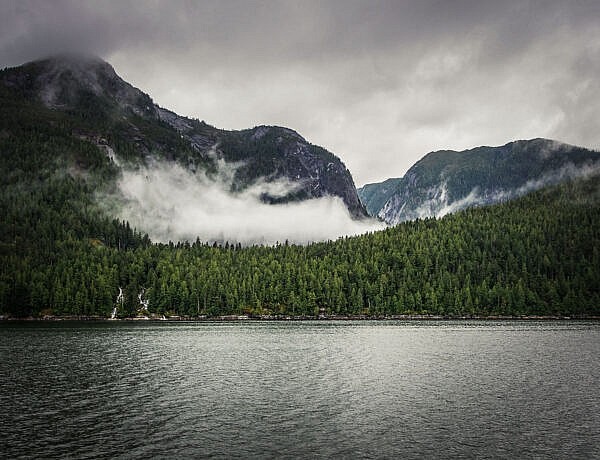


No Comments